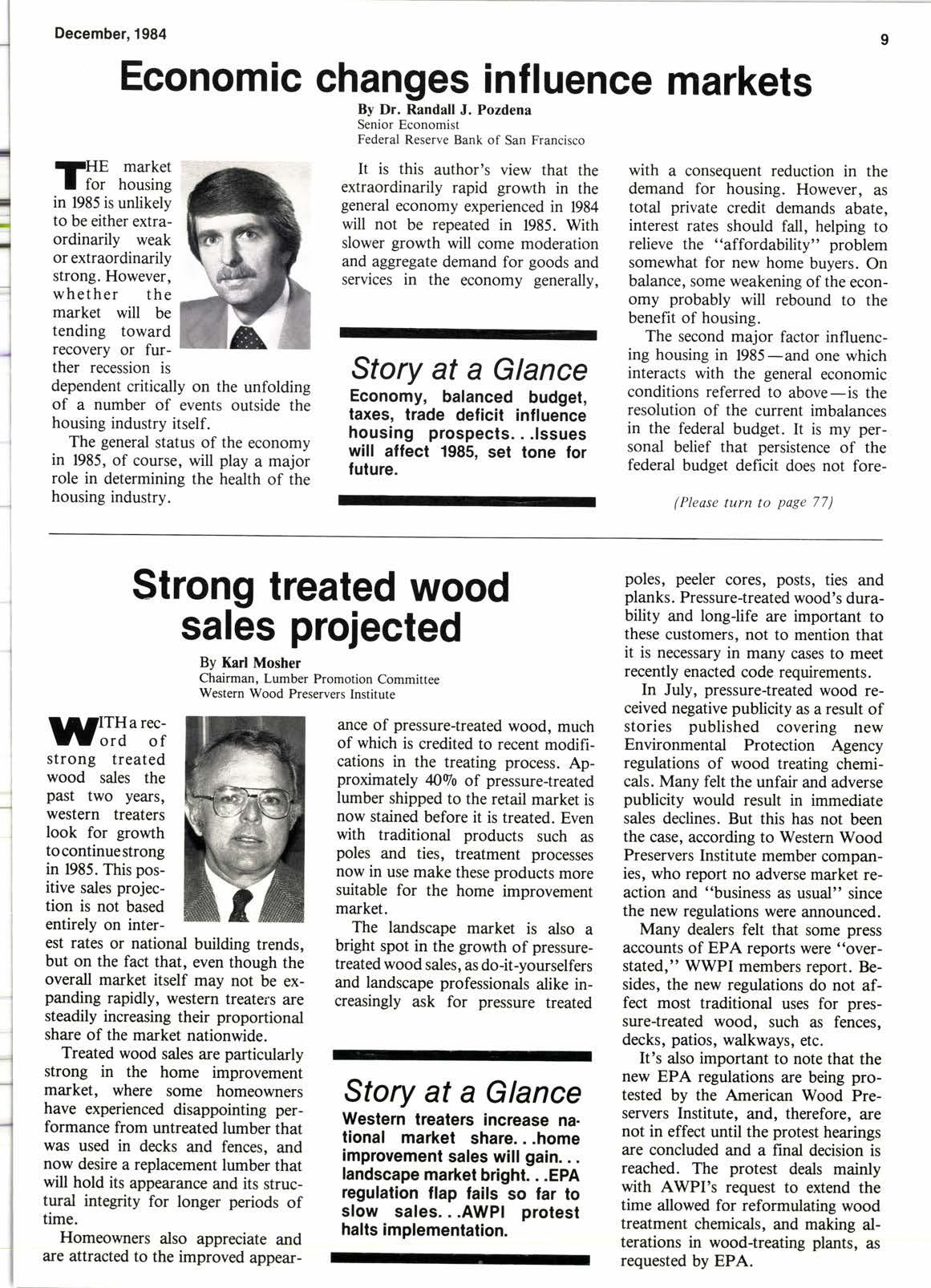
2 minute read
Strong treated wood sales proiected
By Karl Mosher Chairman, Lumber Promotion Committee Western Wood Preservers Institute
WJT"'T;
strong treated wood sales the past two years, western treaters look for growth tocontinuestrong in 1985. This positive sales projection is not based entirely on interest rates or national building trends, but on the fact that, even though the overall market itself may not be expanding rapidly, western treaters are steadily increasing their proportional share of the market nationwide.
Treated wood sales are particularly strong in the home improvement market, where some homeowners have experienced disappointing performance from untreated lumber that was used in decks and fences, and now desire a replacement lumber that will hold its appearance and its structural integrity for longer periods of time.
Homeowners also appreciate and are attracted to the improved appear- ance of pressure-treated wood, much of which is credited to recent modifications in the treating process. Approximately Qv/o of pressure-treated lumber shipped to the retail market is now stained before it is treated. Even with traditional products such as poles and ties, treatment processes now in use make these products more suitable for the home improvement market.
The landscape market is also a bright spot in the growth of pressuretreated wood sales, as do-it-yourselfers and landscape professionals alike increasingly ask for pressure treated
Story at a Glance
Western treaters increase na. tional market share...home improvement sales will gain... landscape market bright. . .EPA regulation flap lails so far to slow sales...AWPI protest halts implementation.
with a consequent reduction in the demand for housing. However, as total private credit demands abate, interest rates should fall, helping to relieve the "affordability" problem somewhat for new home buyers. On balance, some weakening of the economy probably will rebound to the benefit of housing.
The second major factor influencing housing in 1985-and one which interacts with the general economic conditions referred to above-is the resolution of the current imbalances in the federal budget. It is my personal belief that persistence of the federal budget deficit does not fore-
(Please turn to page 77) poles, peeler cores, posts, ties and planks. Pressure-treated wood's durability and long-life are important to these customers, not to mention that it is necessary in many cases to meet recently enacted code requirements.
In July, pressure-treated wood received negative publicity as a result of stories published covering new Environmental Protection Agency regulations of wood treating chemicals. Many felt the unfair and adverse publicity would result in immediate sales declines. But this has not been the case, according to Western Wood Preservers Institute member companies, who report no adverse market reaction and "business as usual" since the new regulations were announced.
Many dealers felt that some press accounts ofEPA reports were "overstated," WWPI members report. Besides, the new regulations do not affect most traditional uses for pressure-treated wood, such as fences, decks, patios, walkways, etc.
It's also important to note that the new EPA regulations are being protested by the American Wood Preservers Institute, and, therefore, a^re not in effect until the protest hearings are concluded and a final decision is reached. The protest deals mainly with AWPI'S request to extend the time allowed for reformulating wood treatment chemicals, and making alterations in wood-treating plants, as requested by EPA.










